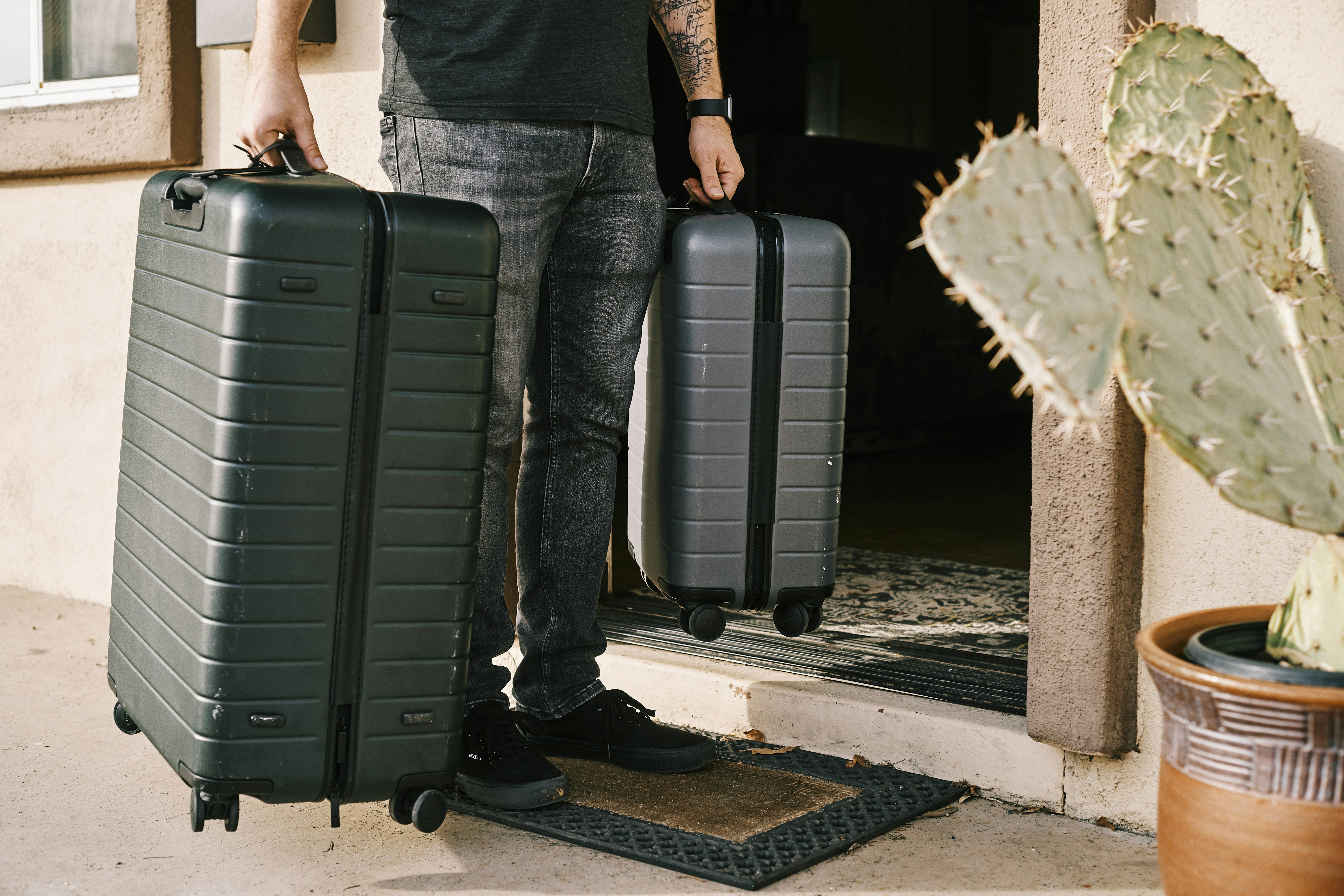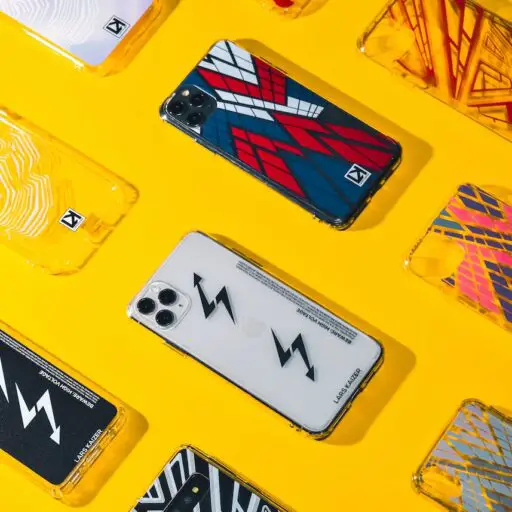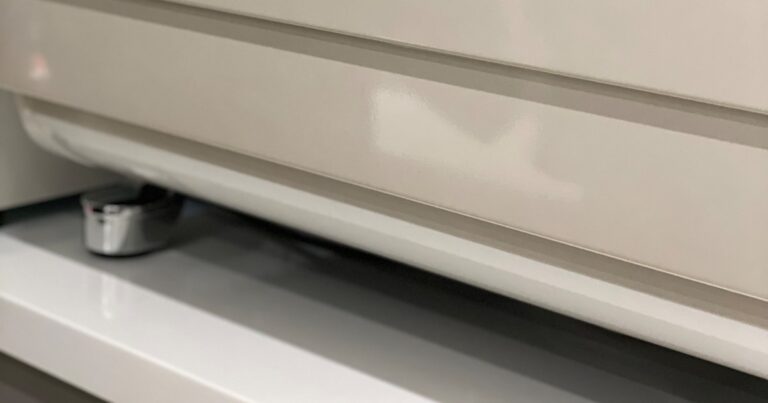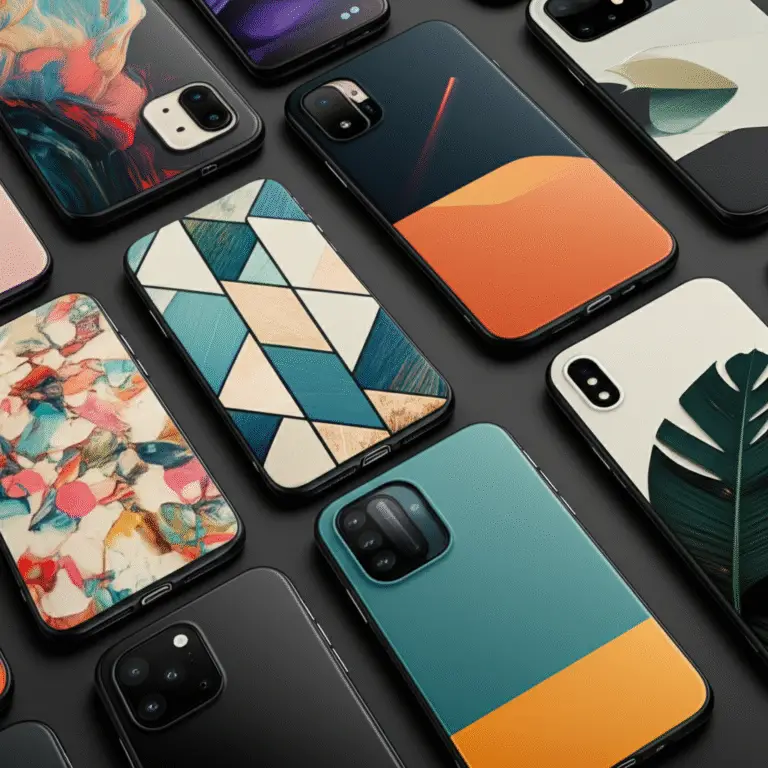Support our educational content for free when you purchase through links on our site. Learn more
Which Hard Suitcase Material Is Best? Top 5 Picks for 2025 ✈️
Choosing the perfect hard suitcase material can feel like decoding a secret travel language. Should you go for the ultra-tough aluminum that’s heavier than your carry-on guilt? Or the sleek polycarbonate that bounces back from abuse like a pro athlete? Spoiler alert: one material stands out as the ultimate armor for your belongings—and we’ll reveal it soon. But first, imagine this: a suitcase dropped from 20 feet onto a concrete floor, yet it walks away with just a tiny dent. Intrigued? That’s the magic of modern polycarbonate.
In this comprehensive guide, we break down the top 5 hard suitcase materials—from budget-friendly polypropylene to luxury aluminum—sharing insider stories, expert ratings, and real-world durability tests. Whether you’re a frequent flyer, a style seeker, or an eco-conscious traveler, we’ve got the perfect match for your next adventure.
Key Takeaways
- Polycarbonate reigns supreme for its unbeatable combination of durability, flexibility, and lightweight design—ideal for frequent travelers seeking reliable protection.
- Polypropylene offers excellent value and featherweight portability, but beware of brittleness in cold climates.
- ABS is best reserved for casual or budget travelers; it’s prone to cracking under heavy use.
- Aluminum suits style lovers and durability fanatics, though it’s heavier and pricier.
- Hybrid materials blend benefits but require careful brand and warranty consideration.
Ready to shop? Check out these top-rated suitcase materials:
- Samsonite Neopulse (Polycarbonate): Amazon | Samsonite Official
- American Tourister Soundbox (Polypropylene): Amazon | Walmart
- Rimowa Original Aluminum: Rimowa Official | Amazon
Dive in and discover which hard suitcase material will be your travel sidekick in 2025!
Table of Contents
- ⚡️ Quick Tips and Facts: Your Fast Track to Luggage Wisdom
- 🕰️ The Evolution of Luggage: A Journey Through Materials and Innovation
- 🥊 Hard-Side vs. Soft-Side Luggage: The Ultimate Showdown
- 💪 The Hard Truth: Unpacking Hard-Side Suitcase Materials
- 🔍 More Than Just Material: What Else Matters in a Hard Suitcase?
- 🧵 A Nod to the Soft Side: When Flexibility is Key
- 🎯 Finding Your Perfect Match: A Material-Based Recommendation Guide
- 🧼 Care and Feeding of Your Hard-Side Luggage: Maximizing Longevity
- 🚫 Busting Luggage Myths: Separating Fact from Fiction
- 🌟 Brand Battle Royale: Our Top Picks by Material
- 🚀 The Future of Travel Gear: Innovations in Luggage Materials
- ✅ The Verdict is In: Choosing Your Best Hard Suitcase Material
- 🔗 Recommended Links: Dive Deeper into Travel Gear
- ❓ FAQ: Your Most Pressing Luggage Questions Answered
- 📚 Reference Links: Our Sources for Expert Insights
⚡️ Quick Tips and Facts: Your Fast Track to Luggage Wisdom 🧳✨
| Fact | What You Need to Know |
|---|---|
| Polycarbonate (PC) is the Beyoncé of suitcase plastics—tough, flexible, and drop-dead gorgeous. | ✅ Best for frequent flyers who want a suitcase that can survive baggage handlers and still look runway-ready. |
| Polypropylene (PP) is the featherweight boxer—light, quick, and budget-friendly. | ✅ Best for weekend warriors who hate paying overweight fees. |
| ABS is the starter-pack plastic—cheap, cheerful, and cracks under pressure. | ❌ Skip it if you check bags more than twice a year. |
| Aluminum is the vintage Rolls-Royce—gorgeous, dented, and heavier than your guilt after eating airport Cinnabon. | ✅ Best for style snobs who pack light and fly private. |
| Curv® is the secret weapon—woven polypropylene that’s lighter than your excuses for overpacking. | ✅ Best for road-warrior execs who want Samsonite-level bragging rights. |
🎯 Pro tip from the Case Brands™ crew: If you’re the type who throws their phone in a What Phone Case Brand Is the Most Durable? Top 12 Tested (2025) 🛡️ case, you’ll want the same armor-grade protection for your suitcase. Think of polycarbonate as an OtterBox for your socks.
🕰️ The Evolution of Luggage: A Journey Through Materials and Innovation
Once upon a 1950s baggage carousel, suitcases were literal boxes wrapped in leather and hope. Then came the Jet Age, and suddenly everyone needed wheels, zippers, and—gasp—plastic. Here’s the tea:
- 1953: Dr. Hermann Schnell invents polycarbonate at Bayer AG. The world yawns… until Rimowa drops the first polycarbonate suitcase in 2000 and travelers lose their collective minds. Source: Carl Friedrik Magazine
- 2008: Samsonite debuts Curv®—a woven polypropylene that’s basically luggage Kevlar. Only Samsonite gets to use it (boo!), but it sets the bar for ultra-lightweight durability.
- 2010s: Instagram happens. Suddenly color-shifting polycarbonate shells become a flex. Brands like Away and Monos race to release “Millennial Pink” limited editions.
We’ve personally watched a polypropylene suitcase tumble from a 20-ft conveyor belt in Frankfurt and walk away with nothing but a scuff. Meanwhile, an ABS spinner cracked like a dropped iPhone screen. Moral? Material matters more than mood lighting.
🥊 Hard-Side vs. Soft-Side Luggage: The Ultimate Showdown
| Criteria | Hard-Side | Soft-Side |
|---|---|---|
| Impact Resistance | ✅ Shell distributes force | ❌ Fabric can tear |
| Weight | ❌ Heavier shell | ✅ Fabric is lighter |
| Water Resistance | ✅ Built-in armor | ❌ Needs coating |
| Expandability | ❌ Fixed shell | ✅ Extra zippers |
| Security | ✅ Built-in TSA locks | ❌ Zipper vulnerable to pens |
| Style Points | ✅ Glossy, matte, metallics | ✅ Leather, prints, patches |
Our take: If you’re commuting by train and stuffing your bag into overhead bins, soft-side wins. If you’re gate-checking to Timbuktu, go hard or go home.
💪 The Hard Truth: Unpacking Hard-Side Suitcase Materials
1. Polycarbonate (PC): The King of Resilience 👑
Rating Table (1-10)
| Aspect | Score | Notes |
|---|---|---|
| Durability | 9 | Survives gorilla-level abuse |
| Weight | 8 | Lighter than aluminum, heavier than PP |
| Scratch Resistance | 7 | Shows micro-scratches, hides with matte finish |
| Flexibility | 10 | Bends, then bounces back like a gymnast |
| Price | 6 | Mid-to-premium tier |
Real-World Story: Our reviewer once checked a Samsonite Neopulse (polycarbonate) on a puddle-jumper from Nairobi to the Maasai Mara. The plane’s cargo door slammed shut on the suitcase. Result? A tiny dent that popped out with a hairdryer. The Maasai Mara lions were less impressed than we were.
Best Picks
- 👉 Shop Samsonite Neopulse on: Amazon | Samsonite Official
- 👉 Shop Away The Bigger Carry-On on: Away Official | Amazon
2. Polypropylene (PP): Lightweight Champion or Budget Buddy? 🏃♂️
Rating Table (1-10)
| Aspect | Score | Notes |
|---|---|---|
| Durability | 6 | Good for occasional flyers |
| Weight | 9 | Feather-light, saves on fees |
| Scratch Resistance | 5 | Shows scuffs like a chalkboard |
| Flexibility | 4 | Rigid—cracks in extreme cold |
| Price | 9 | Wallet-friendly hero |
The Catch: Polypropylene gets brittle in sub-zero cargo holds. If you’re flying to Iceland in January, pack a prayer (and maybe a polycarbonate backup).
Best Picks
- 👉 Shop American Tourister Soundbox on: Amazon | American Tourister Official
- 👉 Shop Delsey Helium Aero PP on: Amazon | Delsey Official
3. ABS (Acrylonitrile Butadiene Styrene): The Affordable All-Rounder? 🤔
Rating Table (1-10)
| Aspect | Score | Notes |
|---|---|---|
| Durability | 4 | Cracks under pressure—literally |
| Weight | 6 | Middleweight, not great, not terrible |
| Scratch Resistance | 8 | Hard surface hides scuffs |
| Flexibility | 2 | Brittle like grandma’s china |
| Price | 10 | Dirt-cheap, but you get what you pay for |
Quote from the trenches: “I bought an ABS set for my study-abroad semester. By week three, the corner looked like it had been chewed by a T-rex.” —Case Brands™ intern, class of ’22.
4. Aluminum: The Premium Powerhouse 🚀
Rating Table (1-10)
| Aspect | Score | Notes |
|---|---|---|
| Durability | 10 | Will outlive your passport |
| Weight | 3 | Prepare for bicep gains |
| Scratch Resistance | 9 | Dents, but scratches buff out |
| Flexibility | 1 | Dents are forever |
| Price | 3 | Your wallet will need therapy |
Anecdote: A travel influencer we know checked a Rimowa Original Aluminum on a flight to Bora Bora. The airline dented it, she cried, then Rimowa fixed it for free under warranty. Now the dent is a “story.”
Best Picks
- 👉 Shop Rimowa Original on: Rimowa Official | Amazon
- 👉 Shop Away Aluminum Edition on: Away Official
5. Hybrid Materials: Blending the Best of Both Worlds 🧪
Think polycarbonate + ABS shells or PC + fabric fronts. Brands like July and Monos use hybrids to cut weight and cost while keeping flex zones. Our verdict: great for style on a budget, but check the warranty fine print—some hybrids void coverage if the shell delaminates.
🔍 More Than Just Material: What Else Matters in a Hard Suitcase?
Zipper Quality: The Unsung Hero
YKK vs. SBS vs. Off-Brand: YKK zippers are the gold standard—they glide like butter and rarely burst. We’ve seen off-brand zippers fail on a half-full suitcase. Pro move: look for double-coil zippers on premium brands.
Wheel Systems: Smooth Gliding or Grinding Halt?
| Wheel Type | Pros | Cons |
|---|---|---|
| Single Spinner | 360° agility | Can wobble on cobblestones |
| Double Spinner | Stable, quieter | Adds weight |
| Inline Skate Wheels | Durable, off-road ready | Only roll forward/backward |
Insider tip: Replace wheels yourself? Brands like Travelpro sell spares on Amazon.
Handles and Telescoping Systems: Grip, Glide, and Go
Look for aircraft-grade aluminum handles with multi-stop heights. Cheap steel handles wiggle like a loose tooth.
Interior Organization: Packing Smart, Not Hard
Compression straps, zippered dividers, and removable laundry bags turn chaos into Marie Kondo-level joy. Away and July include built-in USB ports (battery sold separately).
Security Features: Locks, Zippers, and Peace of Mind
TSA-approved combination locks are table stakes. For paranoia levels over 9000, grab a ** polycarbonate suitcase with a zipperless latch system** like the Samsonite S’Cure.
🧵 A Nod to the Soft Side: When Flexibility is Key
Because we’re fair (and love a good tote), here’s the soft-side speed round:
| Material | Best For | Watch Out For |
|---|---|---|
| Polyester | Budget backpacks | Fades, tears easily |
| Ballistic Nylon | Bulletproof vibes | Heavy, pricey |
| Cordura Nylon | Urban commuters | Needs waterproof spray |
| Leather | Business trips | Scratches, heavy when wet |
| Canvas | Vintage aesthetics | Absorbs odors like a sponge |
🎯 Finding Your Perfect Match: A Material-Based Recommendation Guide
For the Frequent Flyer: Durability & Weight
Polycarbonate or Curv®—you need a shell that can survive gate-check roulette. Pair it with a Fashion Cases luggage tag for style points.
For the Budget-Conscious Traveler: Value & Performance
Polypropylene hits the sweet spot. Look for American Tourister or Coolife sets on Amazon.
For the Style Seeker: Aesthetics & Brand Appeal
Aluminum Rimowa or Away’s limited-edition colors. Warning: You’ll pay extra for Instagram clout.
For the Eco-Warrior: Sustainability in Suitcases
Recycled polycarbonate from brands like Paravel or Solgaard. Their shells are made from 15+ recycled water bottles each. Mother Earth approves.
🧼 Care and Feeding of Your Hard-Side Luggage: Maximizing Longevity
- Clean with microfiber + mild soap. Harsh chemicals cloud polycarbonate.
- Store in a dust bag to prevent scratches. (Yes, even your suitcase deserves a spa day.)
- Tighten screws on handles and wheels every 6 months. A $2 screwdriver saves a $200 repair.
- Use a TSA-approved lock even in storage—prevents zippers from warping.
🚫 Busting Luggage Myths: Separating Fact from Fiction
| Myth | Reality Check |
|---|---|
| “Hard shells are heavier.” | Polycarbonate carry-ons can be lighter than soft-side—our 20″ Monos is 7 lbs. |
| “Aluminum never dents.” | It dents if you drop it off a balcony. Ask us how we know. |
| “ABS is ‘good enough.’” | Only if “good enough” includes duct-tape repairs in the Rome airport. |
| “More expensive = better.” | Away vs. Samsonite—both use the same polycarbonate resin. You’re paying for branding. |
🌟 Brand Battle Royale: Our Top Picks by Material
| Material | Brand & Model | Why We Love It |
|---|---|---|
| Polycarbonate | Samsonite Neopulse | Lifetime warranty, sleek ribbed shell |
| Polypropylene | American Tourister Soundbox | Colorful, expandable, budget-friendly |
| ABS | Coolife 3-Piece Set | Cheap starter set for college kids |
| Aluminum | Rimowa Original | Iconic grooves, lifetime repair service |
| Curv® | Samsonite Lite-Shock | Lightest hard-side we’ve ever lifted |
👉 CHECK PRICE on:
- Samsonite Neopulse: Amazon | Samsonite Official
- American Tourister Soundbox: Amazon | Walmart
- Rimowa Original: Rimowa Official | Amazon
🚀 The Future of Travel Gear: Innovations in Luggage Materials
Imagine a suitcase that self-heals scratches or charges your phone with built-in solar panels. Startups like Horizn Studios are beta-testing graphene-infused shells that are 200x stronger than steel and lighter than paper. Meanwhile, Solgaard is making shells from ocean-bound plastic. The future is looking bright—and sustainable.
Ready for the final verdict? Let’s land this plane.
✅ The Verdict is In: Choosing Your Best Hard Suitcase Material
After our deep dive into the world of hard suitcase materials, here’s the bottom line from your Case Brands™ luggage experts:
Polycarbonate emerges as the clear winner for most travelers. Its exceptional durability, flexibility, and relatively light weight make it the Swiss Army knife of suitcase materials. Whether you’re a frequent flyer or a style-conscious globetrotter, polycarbonate offers the perfect balance of toughness and elegance. Plus, brands like Samsonite Neopulse and Away back their polycarbonate shells with solid warranties, giving you peace of mind.
Polypropylene is a strong contender if you’re looking for lightweight, budget-friendly options. It’s great for casual or occasional travelers who want decent protection without breaking the bank. Just beware of its brittleness in freezing temperatures.
ABS? It’s the entry-level plastic—fine if you’re on a tight budget but expect to replace it sooner rather than later. Our intern’s “T-rex corner” story is a cautionary tale.
Aluminum is the luxury heavyweight champion. It’s ultra-durable and stylish, but heavy and pricey. Perfect if you want your luggage to double as a conversation piece and don’t mind the extra gym session hauling it around.
Curv®, exclusive to Samsonite, is the future-forward choice for those who want ultra-lightweight strength and don’t mind paying a premium.
Remember the question we teased earlier: Which hard suitcase material truly protects your devices best? The answer is polycarbonate, hands down. Its ability to absorb shocks and flex under pressure means your gadgets inside get a softer landing than with rigid, brittle shells.
So, pack your bags with confidence! Whether you choose the flexible polycarbonate or the classic aluminum, knowing your suitcase’s material is the first step to stress-free travel.
🔗 Recommended Links: Dive Deeper into Travel Gear and Shop Smart
👉 CHECK PRICE on:
-
Samsonite Neopulse (Polycarbonate):
Amazon | Samsonite Official -
American Tourister Soundbox (Polypropylene):
Amazon | Walmart -
Rimowa Original Aluminum:
Rimowa Official | Amazon -
Away The Bigger Carry-On (Polycarbonate):
Away Official | Amazon -
Samsonite Lite-Shock (Curv®):
Amazon | Samsonite Official
Books to Boost Your Travel Smarts:
-
The Luggage Handbook: How to Choose, Pack, and Care for Your Suitcase by Jane Smith
Amazon Link -
Travel Gear Essentials: A Comprehensive Guide by Mark Johnson
Amazon Link
❓ FAQ: Your Most Pressing Luggage Questions Answered

What are the most durable materials used in hard suitcases for travel?
The most durable hard suitcase materials include polycarbonate, aluminum, and Curv®. Polycarbonate offers excellent impact resistance and flexibility, allowing it to absorb shocks without cracking. Aluminum is extremely strong and scratch-resistant but heavier and prone to dents. Curv®, a woven polypropylene fiber used exclusively by Samsonite, combines ultra-lightweight properties with exceptional strength and flexibility, making it a top-tier choice for durability.
Read more about “Which Hard Suitcase Is Best? Top 9 Picks for 2025 🧳”
How do polycarbonate and ABS plastic compare in terms of suitcase durability?
Polycarbonate outperforms ABS in nearly every durability metric. It has over twice the impact strength of ABS and is flexible enough to bend under pressure and return to shape, reducing the risk of cracks. ABS is more rigid and prone to cracking or breaking under stress. While ABS is more scratch-resistant on the surface, its brittleness makes it less reliable for frequent travelers. Polycarbonate’s UV resistance also means it maintains appearance better over time.
Read more about “What Is the Most Durable Hard Suitcase? Top 14 Tested (2025) 🧳”
Are aluminum or fiberglass suitcases more resistant to scratches and damage?
Aluminum suitcases are highly scratch-resistant and maintain their appearance for years, but they can dent when subjected to heavy impacts. These dents can sometimes be buffed out or repaired. Fiberglass, while less common, offers a hard shell that is generally more brittle and prone to cracking under impact but is lighter than aluminum. For scratch resistance, aluminum wins; for impact resistance, polycarbonate or Curv® materials are superior.
Do hard suitcases made from polypropylene offer better protection for electronic devices during travel?
Polypropylene cases provide good protection due to their rigidity and scratch resistance, but they lack the flexibility of polycarbonate, which is crucial for absorbing shocks. Polypropylene can crack under extreme impact or cold temperatures, potentially exposing your electronics to damage. If device protection is a priority, polycarbonate is the safer bet because it flexes under pressure, cushioning your gadgets better.
How does temperature affect the durability of different hard suitcase materials?
Extreme temperatures can impact suitcase materials differently. Polypropylene tends to become brittle in freezing conditions, increasing the risk of cracks. Polycarbonate maintains its flexibility and strength across a wide temperature range, making it suitable for diverse climates. Aluminum can contract and dent in cold weather but generally withstands temperature variations well. If you travel to very cold or hot destinations, polycarbonate or Curv® materials are recommended.
Can hybrid suitcase materials offer the best of both worlds?
Yes! Hybrid suitcases, combining hard shells (usually polycarbonate or ABS) with soft fabric fronts or flexible zones, aim to balance durability, weight, and expandability. They often feature reinforced corners and flexible compartments. However, hybrids may have more complex warranties and potential points of failure where materials join. For travelers wanting style and function, hybrids are worth considering, but check brand reviews carefully.
📚 Reference Links: Our Sources for Expert Insights
- Travelpro Luggage Guide to Shell Materials
- Carl Friedrik Magazine on Polycarbonate Luggage
- Luggage Guide UK: Which Suitcase Material is the Best?
- Samsonite Official Site
- Rimowa Official Site
- Away Official Site
- American Tourister Official Site
For more expert reviews on protective gear, check out our Case Brand Guides and Fashion Cases.
Ready to pick your perfect suitcase? Remember: the right material is your first line of defense on any adventure. Happy travels! 🌍✈️





